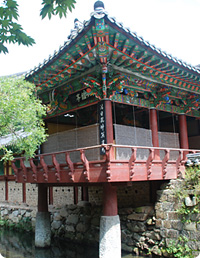PACKAGE
Classic Korea 7 days
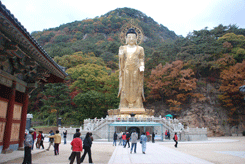
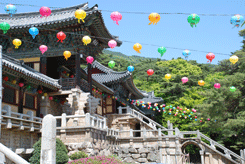
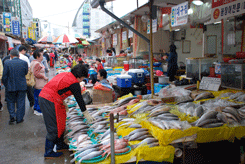
Tour Highlights
- Gyeongbokgung Palace
- National Folk Museum of Korea
- Insadong
- Gwangjang Market
- N Seoul Tower
- Hwaseong Fortress
- Beopjusa Temple
- Haeinsa Temple
- Goryeong Tumuli Museum
- Daegaya Museum
- Seokguram Grotto
- Bulguksa Temple
- Gyeongju National Museum
- Cheomseongdae Astronomical Observatory
- Tumuli Park
- Yangdongmaeul Village
- Haeundae Beach
- UN Memorial Cemetery
- Yongdusan Park
- Jagalchi Fish Market
Click on the days to access the program quick
| Days | Visits and Activities | Distance |
| Day 1 | Arrive Seoul | 60km |
| Day 2 | Seoul | |
| Day 3 | Seoul - Suwon - Songnisan | 200km |
| Day 4 | Songnisan - Gayasan - Goryeong - Gyeongju | 290km |
| Day 5 | Gyeongju | |
| Day 6 | Gyeongju - Yangsan - Busan | 110km |
| Day 7 | Departure |
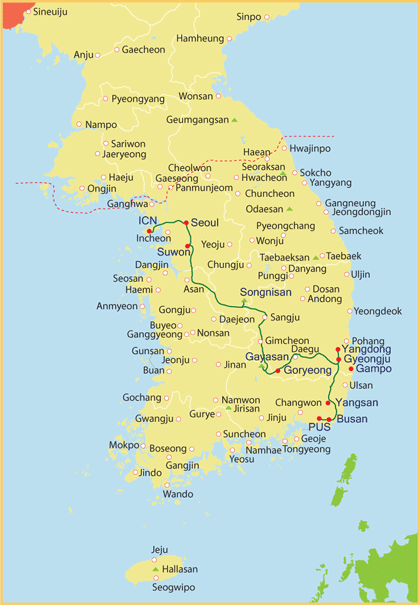 Day 1 Arrive Seoul (- - -)
Day 1 Arrive Seoul (- - -) 60km
Touching down at Incheon International Airport places you in the heart of Korea. After you clear Passport and Customs control, you will be welcomed by the tour guide and then transferred to your hotel.
Day 2 Seoul (B)
Your exploration this morning begins with a driving tour of Seoul, featuring sites such as Seoul Plaza, City Hall, Cheonggye Square and pedestrian-friendly Gwanghwamun Plaza that is hemmed in on both sides by rushing traffic and office buildings. The plaza is lined on each side with 365m long streamlets, two centimeters deep and one meter across, the stone bed of the plaza's east side waterway engraved with important events in chronological order from 1392 to 2008.
Standing high on a stone pillar is a statue of Yi Sunsin who had engaged in twenty-three naval battles and emerged victorious in all of them during the Hideyoshi invasion (1592-1598). King Sejong who propagated the Korean alphabet in the 15th century is also honored with prominent statue. On August 16, 2014, Pope Francis celebrated Mass in this plaza to beatify 124 Korean martyrs. Near the southwest corner of the plaza is Korea's Kilometer Zero, marking the distances to 64 cities around the world, including Seoul's antipode, Montevideo, Uruguay, 19,606km.
Step back in time to when life was gracefully slow and discover Gyeongbokgung Palace, a particularly charming spot that represents a colorful and turbulent side of the capital's 500-year history. Depending on timing, you may witness the Royal Guard Changing Ceremony featuring parade, password verification, duty shift and patrolling the gate. Accompanied by a court band with its colorful costumes and royal flags, the ceremony is performed daily basis at 10:00 and 14:00 except Tuesdays, although it is cancelled in case of rain or extremely hot or cold weather.
Up from the gates is a spacious stone-paved courtyard that is fully enclosed by wooden cloisters, and at the center of which runs three footpaths through two rows of rank stones, indicating the positions of the officials with the highest rank being closer to the hall.
Standing majestically on top of a two-tiered stone platform that is lined with detailed balustrades is Geunjeongjeon Hall, where the king formally granted audiences to his officials, gave declarations of national importance, presided over large official functions, and greeted foreign envoys and ambassadors. Check out the royal throne and a large painting, depicting sun, moon, five peaks, streams and pine trees, which was the crucial signifier of the king. And up in the center of the ceiling, the bright golden dragons in bold relief indicate the presence of the king.
At the back of the throne hall is a group of court offices. Displayed in front of the King's official quarters is sundial, conceived in order to catch the shadow of the sun, which tells time and 24 periods of seasonal change from the winter solstice to the summer solstice.
Sitting on the island in the rectangular lake is Gyeonghoeru. Supported by 48 square and cylindrical massive stone pillars representing the idea of Yin and Yang, this magnificent pavilion was used for many purposes ranging from receptions to national examinations.
Gangnyeongjeon is the king's sleeping and living quarters while Gyotaejeon is the queen's domain containing a number of halls. The noted feature of these main buildings is an absence of a top roof ridge.
Amisan Garden, landscaped with four hexagonal chimneys in orange bricks, is seldom noticed by the hurried visitors. Jagyeongjeon is the queen dowager's residence. Although less colorful, it is worth noting the wall, adorned with floral designs and the chimneys with ten longevity symbols.
Hyangwonjeong features a small pond with a manmade islet that supports a beautiful two-story pavilion. Behind this serene garden is Geoncheonggung, where the king and queen could relax in peace and quiet. It was here that the first electric lights in the country were installed in 1887 after 8 years of Thomas Edison's invention and a tragic chapter in Korea's history was recorded when empress Myeongseong was assassinated by the sword-bearing Japanese assassins in the early morning of 8 October 1895, allegedly under orders from Miura Goro.
Your visit to the National Folk Museum of Korea will familiarize you with wealthy culture of this friendly and picturesque nation. It is an excellent facility to illustrate the history of traditional life of the Korean people from the prehistoric age to the Joseon dynasty. The permanent exhibition features life and work, costumes and ornaments, handicrafts and technology, educations, living quarters, dietary life, oriental medicine, performing arts and games, beliefs and rituals, and socio cultural life.
Insadong, at one time the center of traditional Korean art and antiques, features a mixture of historical and modern atmosphere representing the cultural glimpse of the nation. Clustered along the main street and alleys are lined with street vendors, wooden tea houses, restaurants and numerous galleries and shops dealing in antiques, oriental art supplies, and modern Korean art of all types and styles. Soak in the paintings, upscale artworks, antiques and potteries while you can. Get lucky and you just might meet the artist themselves. It can be plenty of fun walking on the main street, but you venture into the hidden alleys that do spring some unexpected surprises. While here, you may want to buy some souvenirs or simply wander and browse at leisure admiring cultural ambience.
Enjoy a brief visit to Gwangjang market. It is one of few markets retaining traditional Korean atmosphere. Established in 1905, the market today has 5,000 independent shops. On the market's ground level, the floor space is dominated by scores of small snack stalls selling rustic delicacies and cheap treats. Clouds of smoke billow out from the boiling pans, diverse types of pancakes sizzle on hot iron grills and the smell from the eateries filling the air. The roadside vendors hawking everything from food, fruits, vegetables to seafood and an entire upper level dedicated to high quality silk, satin, and linen. Try out some sorts of Korean snacks and see a side of regular Seoul life.
Drive past Cheonggyecheon Stream. After the Korean War (1950-1953), more people migrated into Seoul to make their living and settled down along the stream in shabby makeshift houses. The accompanying trash and waste, and deteriorating conditions resulted in an eyesore for the city. The stream was covered with layers of concrete in the mid 1950s and roadway until the massive urban renewal project freed it in 2005. Today, a 5.8km creek tumbles gently through downtown Seoul, providing a much needed source of peace and relaxation for the citizens of this fast-paced city.
You will also view Dongdaemun which once served as the east gate of Seoul and a block away is DDP of a distinctively neofuturistic design. Characterized by the "powerful, curving forms of elongated structures", it ramains as a major urban development landmark of Seoul.
Before you end the day's sightseeing, you will enjoy a panoramic view of Seoul over at N Seoul Tower observatory. Perched on top of Namsan Mountain, the tower tops out at 479.7m above sea level. It was constructed in 1975 as Korea's first integrated communication tower, transmitting TV and FM radio signals to the city and has now become a symbolic landmark of the capital. It is the absolute best place to enjoy the most enthralling vistas of Seoul. Near the tower base, you cannot possibly miss time capsule. Buried in 1985 under 15m of the ground, it holds 466 relics representing contemporary Korean lifestyle and culture. The capsule is scheduled to open five hundred years later in 2485. You will also witness thousands of Love Padlocks hanging from all sides, overwhelming the wire fence, without their keys to symbolize that their love for each other is forever. And Love Trees made of hundreds of locks are quite a sight to behold.
Day 3 Seoul - Suwon - Songnisan (B) 200km
You will explore UNESCO World Heritage site of Hwaseong Fortress from the 18th century. Though it is relatively small in scale, it is well acknowledged as the best structure of its kind ever built in Korea. A 5.74km-long fortress enclosing both flatland and hilly terrain is parapeted with crenels and merlons and highlighted by four main gates and well over 50 structures including temporary palace where the king sought refuge during war and found rest during times of peace. A walk through the whole fortress could take several hours but it is well worth making a short walking tour to enjoy the splendor of the fortress, including the Korea's largest Janganmun Gate.
Your journey continues to Songnisan national park, weaving through the picturesque countryside. En route, make a short stop at a 600-year-old pine tree shaped like an open umbrella. In recent years several branches were damaged by wind and snow, though what remains is still beautiful. Upon entering Beopjusa dating back to 553, you will certainly stand in awe before the enormous golden Buddha gazing down at the temple and a five-story wooden pagoda, the only one left in Korea. Check out a giant iron pot whose diameter is 2.7 meters that may well had been used to feed 3,000 priests in the early 12th century. A stone carved lantern supported by twin lions standing face to face is a rare example of the magnificent Silla sculptures. A stone water cistern is considered unique for beauty and design. Two stone pillars once held the temple banner pole. An excellent carved relief called Maaebul and worship halls also can be seen.
You cannot miss Four Buddhist Instrument Ceremony. The sounds of each instrument, Brahma bell, Dharma drum, wooden fish and cloud-shaped gong, have a function in saving beings of other realms. Hearing them reverberating through the universe, you will reflect upon the profound symbolism of the instruments. It is a great vow to save or enlighten the creatures in the universe including those on land, in the sea, in the air and in hell.
Day 4 Songnisan - Gayasan - Goryeong - Gyeongju (B) 290km
Journey through a scenic countryside to Gayasan national park to see a magnificent Haeinsa temple from the 9th century, housing world's oldest and a complete collection of the Buddhist sutras. Haeinsa is one of the most important temples in Korea. They are Tongdosa, Heinsa, and Songgwansa, each of which represents Buddha, Dharma, and the community of followers or "sangha". The first gate to the temple is Iljumun which means "single pillar gate" and symbolizes a true path of enlightenment which leads to the world of Buddha. One has to climb 108 stairs to the last building in the compound from this gate. On each step one can renounce each of 108 worldly desires of the mind.
Following the stairs up, you will reach the main hall courtyard in the middle of which stands stone carved lantern and weathered stone pagoda. Within the main worship hall (Hall of Great Peace and Light), you will see Vairocana Buddha who is flanked on the left by Manjusri, the Bodhisattva of Perfect Wisdom, and on the right by Samantabhadra, the Bodhisattva of Perfect Compassionate Action, along with other Bodhisattvas including Avalokitesvara, vairocana, Ksitigarbha and Dharmogata. Behind the statues are highly detailed and rather unusual wall paintings of the Buddha's life. And on the outside walls are a fair number of paintings portraying Buddhist stories.
At the back of this hall is a group of four depositories or Janggyeong Panjeon from the 15th century. The depositories house 81,258 wood-blocks of Tripitaka Koreana, an offering to the Buddha for national protection from the looming Mongol forces. The printing blocks are some 70cm wide, 24cm long and 2.8cm thick on the average. Each block has 23 lines of text, each with 14 characters, on each side. Each block thus has a total of 644 characters on both sides. Some 30 men carved the total of 52,382,960 characters in the clean and simple style. The characters are perfectly carved as if from the same hand. They were completed in 1251 after 16 years of work in Jeondeungsa temple on Ganghwado and were transported here for safekeeping. Two long depositories are designed to have natural ventilation by facing different size windows in the front and rear of the building.
The Mongol forces eventually took over the Goryeo Dynasty but the wooden blocks remain preserved today having survived other invasions, wars and fire. Even more amazing aspect is that neither birds built nests nor spiders make webs on these buildings. Tripitaka Koreana and Janggyeong Panjeon have been designated by UNESCO as a World Heritage for their artistic as well as religious value. In order to control the temperature and humidity within the depositories and protect the Janggyeon Panjeon and woodblocks from fire, full-time security guards and a 24-hour surveillance system are in place.
Your tour also stops at Goryeong Tumuli Museum located below the group of ancient tombs, featuring a perfect replica of the Jisan-dong Tomb No. 44 itself, a large-scale living burial to be first discovered in Korea. Learn about the ancient sacrificial burial custom a funerary practice, burying humans or animals to accompany a deceased noble person. The practice was widely performed in ancient society and was, in part, practiced by the belief that even in the afterlife, attendants were required for the dead to continue to enjoy a certain lifestyle. You will see the main stone chamber that belongs to the master of the tomb. The king and two sacrificed bodies were laid to rest, and one sacrificed human body in each of three annexed chambers. Human bones of about 24 persons were confirmed in 32 additional stone coffins in the vicinity of the stone chambers. So, taking some completely decomposed bones into the count, about 40 persons were presumably entombed together. Such examples of massive human sacrifice have not been found in other ancient tombs of the era of the Three Kingdoms. Neighboring Daegaya Museum exhibits a huge collection of artifacts excavated in Goryeong and you will also see them.
Gyeongju, an ancient capital of Silla (BC57-AD935), often dubbed as Museum without Walls. Today, you are treated to one of the ten most historically significant sites in the world with ancient temples, weathered stone pagodas, royal tombs, Buddhist bas-reliefs, and fortress ruins.
Day 5 Gyeongju (B)
With a full day to explore the delights of UNESCO World Heritage Site, Seokguram grotto. It is the home of the serene stone Buddha of the eighth century. Inside, a white statue of a seated Buddha in a sublime state of enlightenment, is surrounded by 37 relief figures of Bodhisattvas, disciples, devas, and guardian kings. The grotto represents the magnificent harmony of religion, science and the arts of Buddhism, symbolizing the pure land in which Buddha resides.
A short ride leads you to another UNESCO World Heritage Site, Bulguksa temple, where you will witness the impressive gates, symbolic bridges leading up to the world of Buddha, graceful architectures, Three-storied Seokgatap and highly ornate Dabotap blending well into the architectural harmony. At Gwaneumjeon hall, check out the image of the Avalokitesvara who is referred to as the Bodhisattva of Compassion and has a thousand hands, and eyes in each so as to reach out to those in need of help. You will see a gilded statue of Vairocana with the gesture of the first wisdom, Sakyamuni Buddha along with sixteen figures of Buddha's disciples sitting in deep meditation, and a gilt-bronze Amitabha Buddha who is the ruler of the Western Paradise Sukhavati. The architectural design of Bulguksa is one of constrained dignity, peace, and harmony and the temple still remains one of the most remarkable achievements of the ancient Far East.
The Gyeongju Historic Areas contain a remarkable concentration of outstanding examples of Korean Buddhist art, in the form of sculptures, reliefs, pagodas, and the remains of temples and palaces from the flowering, in particular between the 7th and 10th centuries, of this form of unique artistic expression.
Visit Gyeongju National Museum for a great insight into Silla culture and history. The first thing that you will notice is The Bell of King Seongdeok, the largest extant bell in Korea. You must certainly stand in awe before the bell from the 8th century with such artistic beauty of design. The bell is distinguished not only for its outstanding beauty but also for its long reverberating sound, the incredibly precise casting technique, in addition to the sad legend surrounding it. On entering the museum, you will marvel at the priceless archaeological and historical artifacts including splendid gold crowns, earrings, belts, ornaments, glassware, potteries, and clay figures as well as a royal barge.
You also check out the world's oldest existing astronomical observatory, Cheomseongdae. Each stone used in the observatory bears symbolic meaning; the same number of the days of the year by lunar calendar, the number of the major stars, the months of the year and the numbers of the seasonal divisions. Nearby Tumuli Park encompasses 23 huge tomb mounds where Silla rulers were buried. One of the tombs, Cheonmachong, is opened to the public and you can go inside and see how the tombs were made and replicas of the treasures excavated in 1973.
Afterwards, you will explore UNESCO World Heritage Site, Yangdongmaeul, a delightful journey to the traditional clan village which embraces simple, unadorned natural beauty. There are some steep hills to climb but also easier streets. Over 150 homes as well as two shrines are in perfect harmony with the natural topography, presenting different angles where walls ascend a hill interspersed with tiled roof houses or thatched roof buildings.
Day 6 Gyeongju - Yangsan - Busan (B) 110km
En route to Busan, visit the 7th century Tongdosa, representing the Temple of the Buddha. The approach to the temple is completely entrancing. Magnificently set by a lane of pine trees dancing in the wind and beside which a mountain stream sings a babbling song, a distinctive and exalting place. The main worship hall is unique in that it does not contain a statue of the Buddha, but rather a window looking out onto the Diamond Precepts Altar with a bell-shaped stupa that contains the cremated remains of the Buddha himself. You will find the temple more like a museum as it houses many local treasures and cultural properties.
Journey to Busan, Korea's second largest city surrounded by the ocean on one side, and mountains on the other. Its deep harbor and gentle tides have allowed it to grow into the largest port in Korea and the fifth largest in the world. It is also a center of industry and commerce, a thriving metropolis formed unusually long in shape along its coastal line.
Enjoy a short stop at Haeundae, a world-class beach resort blessed by beautiful water and screened by skyscrapers along the beautifully curved coastline. Then time to stroll Dongbaek island, home to Nurimaru APEC House that played host to an APEC conference in 2005. The years of sedimentation have connected the island to the mainland. This seaside park is a gorgeous retreat brimming with camellias, pine groves and a lovely walking trails some winding along the rocky shore and others climbing through the verdant interior. It is a perfect place for a fresh air escape, offering a great views in all directions. Further down the boardwalk along the shore, you will come upon a statue of a mermaid sitting on a rock amid the crashing. Afterward, feast your eyes on a superb view of Busan as you cross the Suyeong Bay over Gwangan Bridge, installed with over 10,000 colorful LED lights which sparkle brightly under the night skies.
Visit UN memorial cemetery where 2,334 deceased soldiers from fourteen Korean War allies rest in honored serenity. Learn about the Korean War and pay tribute to those who dedicated their lives to the World Peace. During the period of 1951-1954, remains of approximately 11,000 fallen of the UN Forces were buried here. Thereafter, most were repatriated to their home countries. In the cemetery, lie the remains of Korean War heroes from Australia(281), Belgium(1), Canada(382), Colombia(4), France(47), Netherlands(124), New Zealand(32), Norway(1), Republic of Korea(39), South Africa(11), Thailand(1), Turkiye(462), United Kingdom(892), United States of America(41) Unknown and others(16).
You will tour Yongdusan Park where Busan Tower sits atop a hillock of a steep slope, affording 360-degree views of the hilly terrain of this mountainous coastal city and the harbor. Smack dab in the middle of the park stands the statue of Yi Sunsin, who is credited with the perfection of the first iron-clad warship in history. You will also see a flower clock and a Busan citizen's bell that they ring on New Years' Day, March 1 and August 15.
Just off the park is Gwangbokro Street, full of shops selling everything from bargains to luxury items. Adjacent is a maze of small streets alive with color, sidewalks sprinkled with unique shops and local eateries. Enjoy the vibrant ambience as you leisurely make your way to the BIFF square, Busan’s modern movie district having hand prints of the famous movie stars and directors on the sidewalk, movie theaters, trendy shops and street food stalls. The area with originally little more than a pair of cinemas that were built over half a century ago had turned into the newly transformed district, and was named BIFF Square on August 14, 1996.
Across the street from the square is a fascinating Jagalchi fish market, a great attraction located dockside. Here you will find a diverse array of seafood on display as you walk along the narrow alleys of street vendors. A nearby indoor market features live fish in the tanks and the upstairs are dried fish along with many restaurants selling raw fish at reasonable prices. The market is really a visual and culinary treat.
Day 7 Departure (B)
After this wonderful trip exploring Korea and with time to reflect on your surprise in your experience, transfer to Gimhae international airport or Busan International Ferry Terminal in time for your departure. By boarding, you are already far off Busan heading for home.





